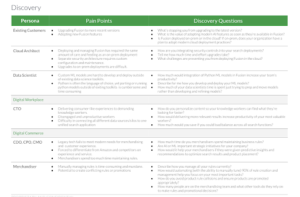Evaluation
Funnel processes at many organizations are often imperfect because of the separation of sales and marketing and the different metrics they’re measured on. Compounding this is that marketing and sales operations teams often work in silos, or at least report to different management chains that prioritize what they’re measured on. The first step in optimizing any funnel is to ask who “owns” the stages of the lifecycle and what metrics are being captured. Any attribution models developed without first understanding the end to end steps in the funnel will be imperfect and are unlikely to be universally accepted.
Diagnosis
The revenue chain can be broken down into discrete steps that are represented in various marketing and sales systems such as leads, contacts, opportunities. Being able to measure the handoffs from one step to the next is critical in diagnosing where problems exist and prioritizing what needs to be fixed.
By identifying these clear steps, you can clarify who owns and is involved in each step and define exit criteria so everyone involved is clear on where a given lead or opportunity sits and what the next action should be to progress. It also provides points at which to measure the effectiveness of the team or program that is responsible for progressing the prospect using the $#%T measurements covered in another post.
Systems Configuration
Once this revenue chain is defined and agreed to, the systems that support the revenue team need to be configured to work together and to capture key fields and timestamps at each handoff point so that calculating the success metrics is real-time and unassailable. This may require timestamping in various systems, snapshotting in a data warehouse and core fields to be defined.
Analytics
With systems appropriately configured you can build out real-time analytics that can show current conversion rates and velocity as well as how that is changing over time. This allows assessment of any programs designed to improve various hand-off points. For example if the conversion rate from MQL to Sales accepted leads is lower than desired, it might be for a number of reasons: the scoring model isn’t aligned, or the ICP isn’t quite right, or the target personas aren’t connecting.




